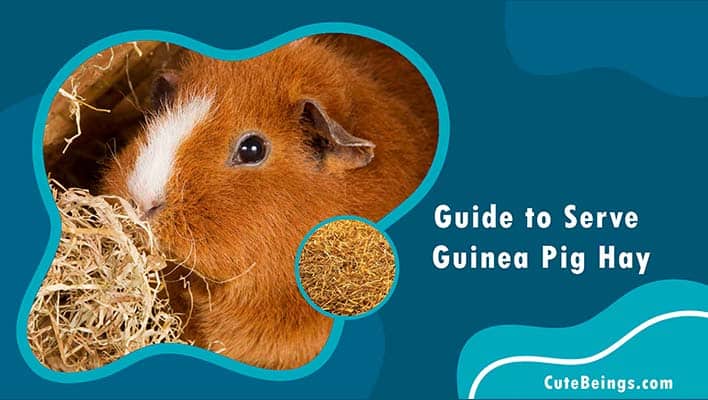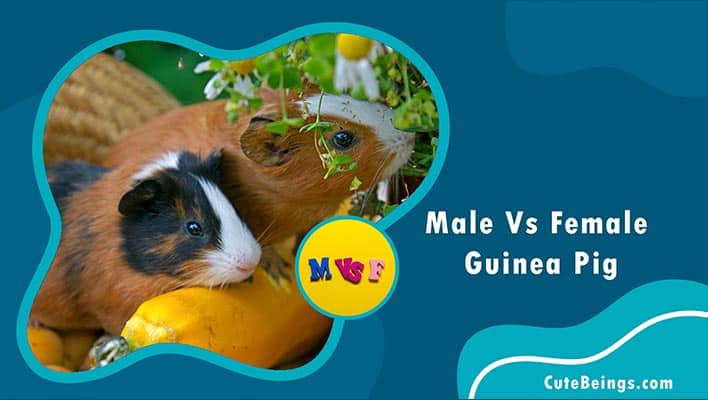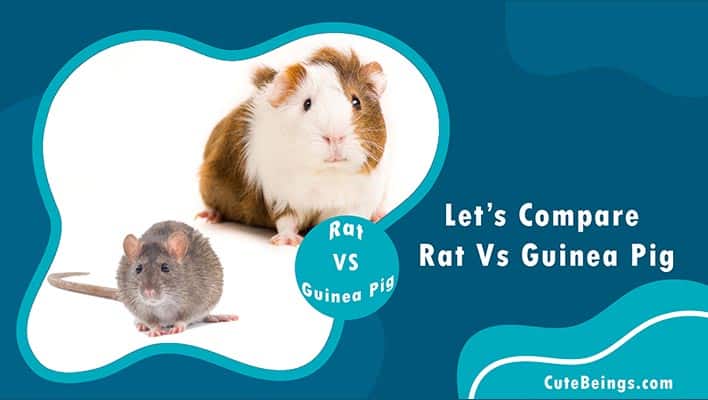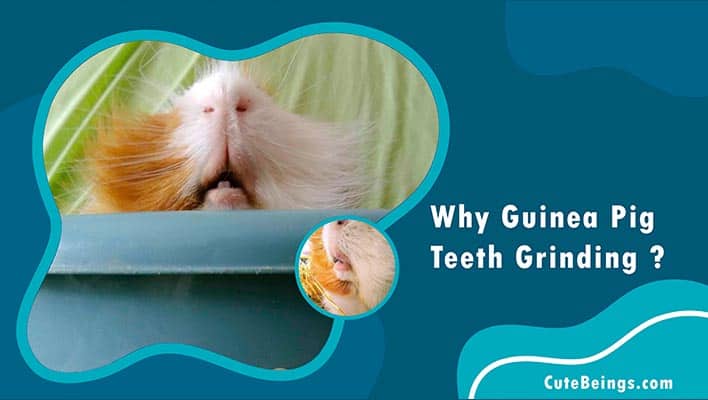“Hay is for horses”, you may have been familiar with this famous saying. Well if you are a guinea pig owner you already know that hay can be served to rodents as well. Hay can be used to feed different kinds of farm animals and domestic animals and there are several types of hay which you can serve to those species. If you are new Guinea pig owner you might have various questions like Is Hay an essential item in guinea pig diet ? Is there a separate type of hay called Guinea Pig Hay ? How to serve Hay ? How To Find Good Quality Hay ? and etc.
Most people say that hay is essential in guinea pig’s diet and should contain at least 80% of the diet. regarding his matter.
When considering the guinea pig’s food pyramid we can sort it out the inclusions as per the nutrients needs.
Table of Contents
Guinea Pig’s Diet Should Contain
- Treats/Fruits – 0-5%
- Vegetables/Greens – 5-10%
- Pellets – 20-25%
- Hay – 70-75%
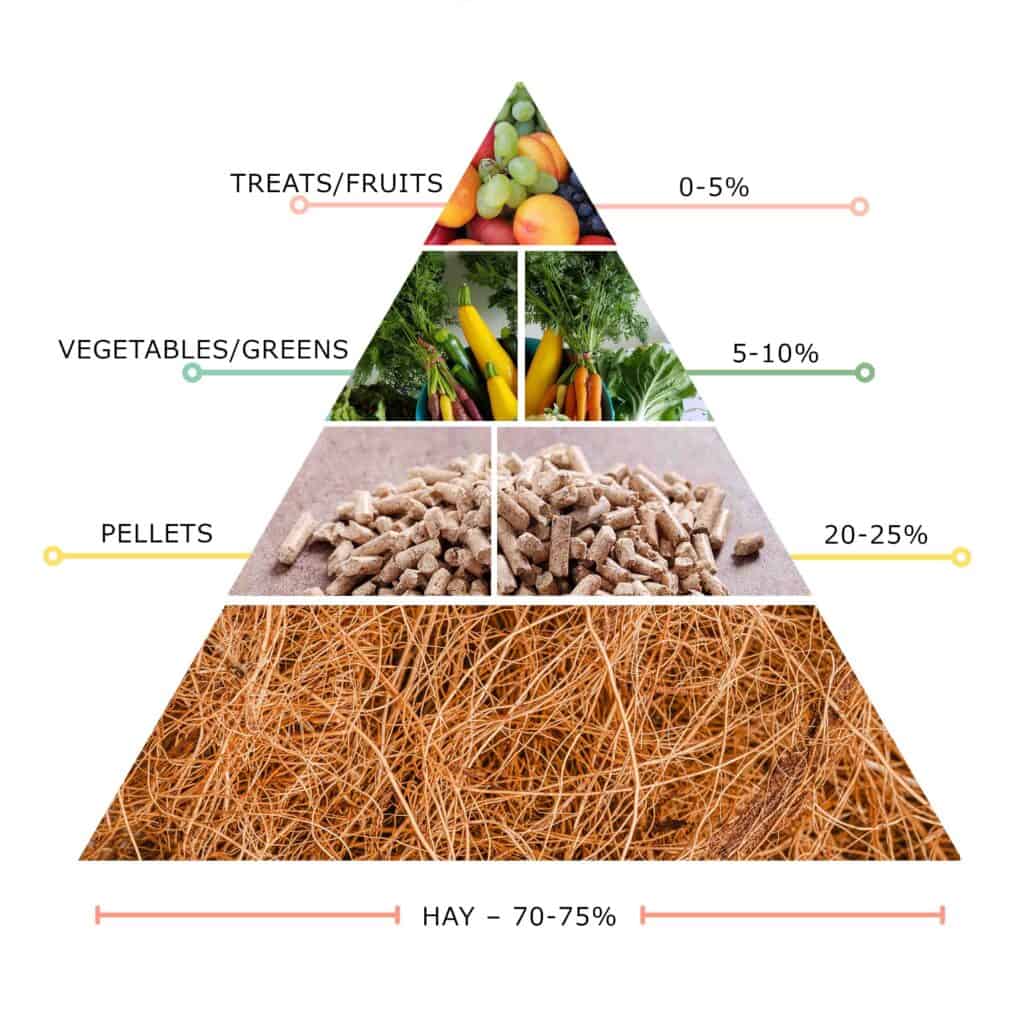
Hay And Guinea Pigs, Why It’s Vital To Guinea Pigs?
Hay is an essential item in guinea pig diet. Hay can fulfill the most of nutrient needs of guinea pigs.
Essential Nutrients In Hay
- Protein
- Fiber
- Calcium
- Fat
Above nutrients are vital for your cavy’s proper growth. Also hay provides enough calories for daily guinea pig routine.
Guinea pigs receive crucial nutrients and fiber through hay and these nutrients help proper operation of their body. Lack of hay can cause fiber shortage, which further result in irregular growth and poor digestion.
Why You Should Choose Quality Hay?
Quality of hay directly affects the health and well-being of your cavy. Most new guinea pig owners don’t know the value of hay and they mainly focus on suitable vegetables and guinea pig pellet than the most essential part of pig’s diet.
Providing those vegetables and right types of pellets is fine to some extension but missing out hay would cause serious damages to your pet’s health. So providing good quality hay is very important.
Researches claim that serving good quality hay and right type of hay can improve your guinea pig’s life expectancy while helping to reduce many diseases.
Many people think that getting a pack of hay or a big bale of hay from a store is the same thing. They say “hay is hay what’s about it?” unfortunately they are wrong. It doesn’t mean that your cavy would enjoy either one better and from its point of view both are same.
But when we consider food, it’s all about quality. As humans we prefer organic fresh fruits or vegetables, why? That’s because they are in better quality than regular ones and they help us maintain our health. Same applies for guinea pigs as well.
Some guinea pig owners buy cheapest quality hay so they can save some money on monthly expenses. But they don’t know that cheapest quality hay is mixed with various types of poor foods and fillers such as alfalfa for cost cutting purposes. In the short run you may save some money but in the long run you will be spending much money than you saved treating your small pet for a serious medical condition which could have been avoided if you had given good quality hay to your guinea pig.
I am not encouraging you to buy just packaged hay by saying that only packaged hay is good for your pet. Just want you to realize that it would absolutely fine if you can get a bale of hay from a farmer. But make certain that what you are getting is in good quality for your guinea pig’s use. Don’t go after good deals just because of the low price. Just be aware you feed the suitable type as well as quality hay to your pet.
How To Find Good Quality Hay?
When you purchase check for these characteristics as you can get a general idea by a visual inspection.
-
Condition- good quality hay would contain little mold and dust.
-
Maturity- high quality hay will consist of higher amount of leaves in the bale and with little or no seed heads or coarse stems.
-
Odor and color- good quality hay has bright greenish color and fresh sweet odor. In low quality hay you will see a bleached form, brown in color and musty odors.
-
Foreign material- the hay should not have objects such as sticks, trash, tree leaves and weeds. Also look for any poisonous plants in the bale.
How You Should Store Hay For Guinea Pigs
Storing guinea pig food is a vital thing, especially hay. When you purchase good quality hay from a pet store or any other shop, you need to take care of storing them properly. Find a cool and dry spot to store your hay as it will remain fresh till your cavy finishes them.
Exposing hay to direct sunlight and heat sources will reduce the nutritional value of hay.
Most importantly keep your hay away from moisture, because moisture can make hay moldy quicker than you think.
When you buy hay buy them in small quantities as usually hay lose its nutritional value over the time.
Key Benefits Of Hay For Your Guinea Pig
Hay helps to maintain proper digestive health
You need to provide your guinea pig a proper diet as they have a very sensitive digestive system otherwise they would suffer from diarrhea and various health issues and won’t have a healthy digestion.
Fiber which is found in hay helps guinea pigs to maintain digestive health.
Helps to maintain healthier teeth
Almost every guinea pig owner may already know that cavies have ever-growing teeth. These teeth need to be wearing down constantly. If you provide enough hay to your guinea pig that can aid in wearing down its teeth
A better, natural bedding material for your guinea pig
As a bedding material you need to have a proper, soft and absorbent material so it will protect cage’s floor from urine and droppings of guinea pig. Absorbency and softness in good quality hay is higher and using hay provides your guinea pig the feeling of a natural environment. Higher absorbency would prevent unhygienic conditions of the cage and further avoids developing infections in guinea pigs.
Hay is warm and playable
Hay could become a lovely toy for guinea pigs. They love to burrow and you can keep a pile of hay so pigs can play with it.
During the winter period due to insulation, hay can keep your guinea pigs a little warm.
9 Types Of Guinea Pig Hay
Though there is a huge variety of hay in the market, all are not good for your pet. Lack of knowledge and understanding would lead to make wrong decisions or difficult choices in such situations. So it is vital for you to have a better understanding about hay. Let’s talk about some common types of hay which are available in the market.
-
Timothy hay
-
Meadow hay
-
Alfalfa hay/Legume hay
-
Oats hay
-
Bermuda hay
-
Coarse hay
-
Gourmet/Botanical hay
-
Bluegrass hay
-
Orchard hay
Timothy Hay
This is the most famous hay among all guinea pig lovers. This hay comes readily available and has a great taste and pleasant aroma. Timothy hay has become the main choice of guinea pig owners over the time as it has become absolute favorite for your guinea pigs.
According to seasonal cuts there are 3 main types of timothy hay.
1st cut – it is the first cut of the field before blooming. This cut is less leafy and more stemy in nature and consists of thinner stems. From nutritional facts, it has lower fat and protein but higher in fiber. It’s mostly yellow and brown in color.
2nd cut – it’s called second cut because it’s the hay which harvested after 1st cut. It is dark green in color and leafier and tender. Also it has a higher level of nutritional value, much greener and less stemy. Though fiber levels are a bit lower than 1st cut fat and protein inclusions are higher.
3rd cut – this variety is pretty leafy and tender. It’s almost same as 2nd cut hay but it’s a bit softer. It has few yellow leaves and harvesting is done later in the season. It is more palatable than other hay varieties. 3rd cut hay has less stem.
When you are choosing hay you need to consider your pig’s health condition especially physical condition. In most situations 2nd cut hay could be the best choice. If you want your pig to gain some weight or your pig is suffering from dental diseases 1st cut and 3rd cut hay would be the best option for you.
Important: always get a recommendation from a vet or professional expert when you want to feed 3rd cut hay as this could cause some health issues to your pig.
Meadow Hay
Meadow hay is a mixture of clovers, soft stemmed grasses, leaves, flowers and seed heads of other edible plants such as daisies and dandelions. Anything which is in the meadow hay could be harvesting end up in a hay bag. Greenish long grass hay strands are the clear identification of this type of hay.
Usually meadow hay is much softer than timothy hay. It depends on guinea pig’s choice as some may love it while others hate it.
Meadow hay is less dusty than other feeding hay. If your pig shows allergies to timothy hay meadow hay would be your best option.
Long grass strands provide higher amounts of fiber and other necessary nutrients to your guinea pigs. It also aids in proper digestion and maintain dental health in your pet. When you purchase meadow hay, choose long fresh grass strands as they are full of nutrients.
Alfalfa Hay
Alfalfa hay is a legume hay in the pea family and also known as Lucerne or medicago sativa. Alfalfa hay is rich in fiber, fat and protein. So for everyday use, it is not suitable. Regular feeding can cause obesity and weight gaining issues to your pet. It’s also rich in calcium and higher intakes can cause serious health issues as too much calcium in diet could lead to bladder stone, diarrhea.
There are such situations that you need to feed alfalfa hay to your pets. If you have pregnant pigs, baby guinea pigs or a young guinea pig which is less than six months old and nursing guinea pig mother you need to consider feeding hay which fulfill their nutrition needs. Alfalfa hay could easily fulfill such nutrition needs but you need to be careful not to add alfalfa hay to their daily diets. Because, if you add alfalfa hay to their diets daily their calorie intake could be higher than actual requirement.
If you have a sick guinea pig who needs to gain some weight, your veterinarian will recommend adding alfalfa hay to your guinea pig’s diet. Also you can add a small quantity to the diet of a adult guinea pig once in a while for a change and make sure to add a quantity that could not harm your guinea pigs health.
Oats Hay
Oats hay is an unusual choice for guinea pig owners. Consists with a long stem and oats attached at the end of it. Usually it’s yellow in color and contains high quantity of fat, fiber and protein. This is a good guinea pig food for pigs such as adult guinea pigs that need extra nutrients.
You can use this hay as an alternation for 1st cut timothy hay and oat hay shouldn’t be included in daily diet if guinea pigs.
Bermuda Hay
Bermuda hay is also called as Bermuda grass hay. This type is high quality hay and feeds rarely to guinea pigs. This is a fine feed for other large animals and a good source of fiber (contains 32% of crude fiber).
Bermuda hay also contains confined amount of proteins and fat. Due to price and availability, Bermuda hay has become a rare choice among guinea pig owners.
Coarse Hay
Coarse hay is not a good feed for your guinea pig as it contains thick stemmed hay. Usually coarse hay over matured and can cause injuries in tissues of mouth which could lead to bacterial infections.
Botanical/Gourmet Hay
The best thing about this botanical hay is its aroma. It’s a mixture of various kinds of herbs, grasses and dried flowers. When cavies eat botanical hay they can taste several tastes at the same time so it’s a wonderful food for your pet.
Usually botanical hay consists of standard amounts of usual nutrients which are fiber, fat and protein.
If you want to increase your pet’s hay appetite, botanical hay is your best option. You can either mix with other hay varieties or serve by itself. As guinea pigs eat a wide variety of fresh greens they would love this mixture of varieties.
As most of other hay types, do not make botanical hay a part of guinea pig’s daily diet.
Bluegrass Hay
Bluegrass hay is greenish and bluish in color and a hybrid variant of orchard seed. Though it can be compared to 3rd cut of timothy hay due to its soft and flexible wide blade strands, it’s leafy and tastes similar to orchard grass hay. It’s also similar to orchard hay nutritionally.
It hardly causes allergies to guinea pigs and guinea pig owners so if your pet is suffering from allergies which caused from timothy hay you can try bluegrass hay.
Important: Never feed your pet moldy, contaminated or soiled hay as it can cause infections, poisoning or even death to your lovely pet.
Orchard Hay
Orchard hay makes a great bedding material for guinea pig due to its smooth appearance. Also this hay is a perfect choice for guinea pig owners who suffer from allergies.
In nutritional wise, orchard hay consists of fats, protein and fiber in perfect balance. Leaves are broader than timothy hay and soft texture makes it really easy for guinea pigs to chew. If you are purchasing orchard hay, choose a new hay bag which is fresh and mold-free.
Frequently Asked Questions(FAQ)
Can Guinea Pigs Survive Without Hay?
No, they can’t survive without hay for a long period.
How Long Can Guinea Pigs Go Without Hay ?
Maximum, they can live up to 24 hours without hay. If guinea pigs stay longer than 24 hours without hay it will make very difficult for them and will not even survive after that.
How Much Hay Can I Give To A Guinea Pig?
If you are feeding timothy hay you don’t need to limit the quantity. But if you are feeding other types such as oats hay or alfalfa hay you need to keep a balance.
Generally you must allow access to food and water for your guinea pigs all the time. Provide them fresh hay and water daily and that will keep them happy and healthy.
Can Guinea Pigs Eat Too Much Hay?
No, you can’t overfeed hay to your cavy. In general you must supply hay abundantly to your pig all the time.
Can You Feed Guinea Pig Only Hay?
No, they can’t survive by just eating hay. Hay lacks of nutrients like vitamin C. At least 80% of guinea pig’s diet should be hay.
You need to provide a well balanced diet such as good amount of hay, guinea pig pellets, vegetables, fruits and other occasional treats.
If you give only hay to your pet, they could be suffering from various health conditions in long term.
Why Does My Guinea Pig Only Eat Hay?
Guinea pigs are picky just like humans in food choices. Some guinea pigs eat only a specific type of food and others may eat whatever guinea pig owner serves them.
If your pet prefers only hay you need to be creative when providing food. You can try mixing several kinds of fruits and vegetables with hay and observe what your guinea pig really likes than hay.
Further, if your pet only eats hay you can grab a patch of its favorite hay and mix it with vegetables and fruits then serve the same mixture to your cavy.
Can Guinea Pigs Eat Fresh Grass Instead Of Hay?
No, guinea pigs cannot be served grass as an alternative to hay. Surely you can feed some grass with hay time to time but there is a big difference serving just grass for diet.
Grass cannot provide nutrients like fiber, protein and fat like hay does. Also chemicals and pesticides can be mixed with grass and those chemicals could be lethal for cavies.
How Can My Guinea Pig Gain Weight With Hay?
If you have an older guinea pig who is troubled to keep weight on try including different varieties of hay to your pig’s diet so it will encourage your pet to eat more hay.
Try serving alfalfa hay and oats hay. Tasty seed heads in oats hay are higher in calories than timothy hay and orchard grass. These varieties not only add extra calories, they also provide enough fiber to guinea pigs.
Alfalfa hay is a good type to gain weight but feeding depends on the certain needs of guinea pig. Usually alfalfa hay is an occasional treat. Also if your guinea pig had bladder stones or sludge feeding alfalfa hay wouldn’t be an option to gain weight. So consult your vet for advice or the alternations.
Is My Guinea Pig Eating Enough Hay?
There could be many reasons for your cavy not to eat enough hay such as shy personality, aging, picky eater or health conditions. When they don’t eat enough they will show distressing signs. Try these methods to find out whether your pig is eating enough hay as a normal cavy does.
Consider providing hideouts if your pig is shy.
In some situations you may try different methods to feed. If you don’t use a hay rack, commonly known as a hay feeder the habitat could be messier. But, because of the accessibility your pet might eat more. If your pet hardly leaves the hideout or feels shy you can place loose hay on the floor and then add some bottomless hideout over the hay so your pig would find it safe and eat more.
Change up the physical presentation for more accessibility.
Try changing the way you serve hay to your guinea pig. If you are using a hay feeder or hay rack your pigs would have to work for food. If they have to reach out hay by stretching their neck place the feeder in a lower position so they can reach out easily. Especially older guinea pigs may find it hard to eat from hay feeders.
Observe them closely for changes or awkward behavior.
Hidden or ongoing health issues can cause discomfort to your small pet and would result in expending less effort to consume their food. If you feel or suspect something wrong with your cavy, take your pet to a veterinarian to examine any health issues because a small issue could turn into a bigger problem if you neglect it.
So monitor your pet’s behavior for changes in their food consumption routine.
Why Does My Guinea Pig Waste So Much Hay?
The first thing I should put on weight is hay is not just for eating. Guinea pigs may pull out hay from feeders and play with them while spreading them around the floor. If you consider this as wasting try to think from your guinea pig’s point of view for a moment.
-
Hay could be your pet’s favorite toy. They like to play with hay and even could get into a war with their cage mates for a certain delectable strand.
-
Your pet could even consider pulling out hay from the feeder is a game and manipulating the environment could be unlimited fun for them.
-
As guinea pigs love to burrow they may use hay as an enjoyable burrowing material. Also they would try to make their own comfort zone by placing hay as a bedding material.
To keep your guinea pig happy remove any soiled hay from the cage and keep it tidy. If you are worrying about throwing away soiled hay you can compost it to create new soil.
Can I Use Timothy Hay For Guinea Pig Bedding?
Yes, you can use timothy hay as a bedding material. As it has a smooth soft texture, timothy hay provides great natural bedding.
Order-free wise timothy hay may not be the best choice but as guinea pigs love to burrow and play with it, adding hay could give endless joy to these small rodents.

Hello, my name is Michelle and I’m a pet lover. For the past 12 years, I’ve been caring for pets. As a result of this, I decided to share my personal experience with you.

